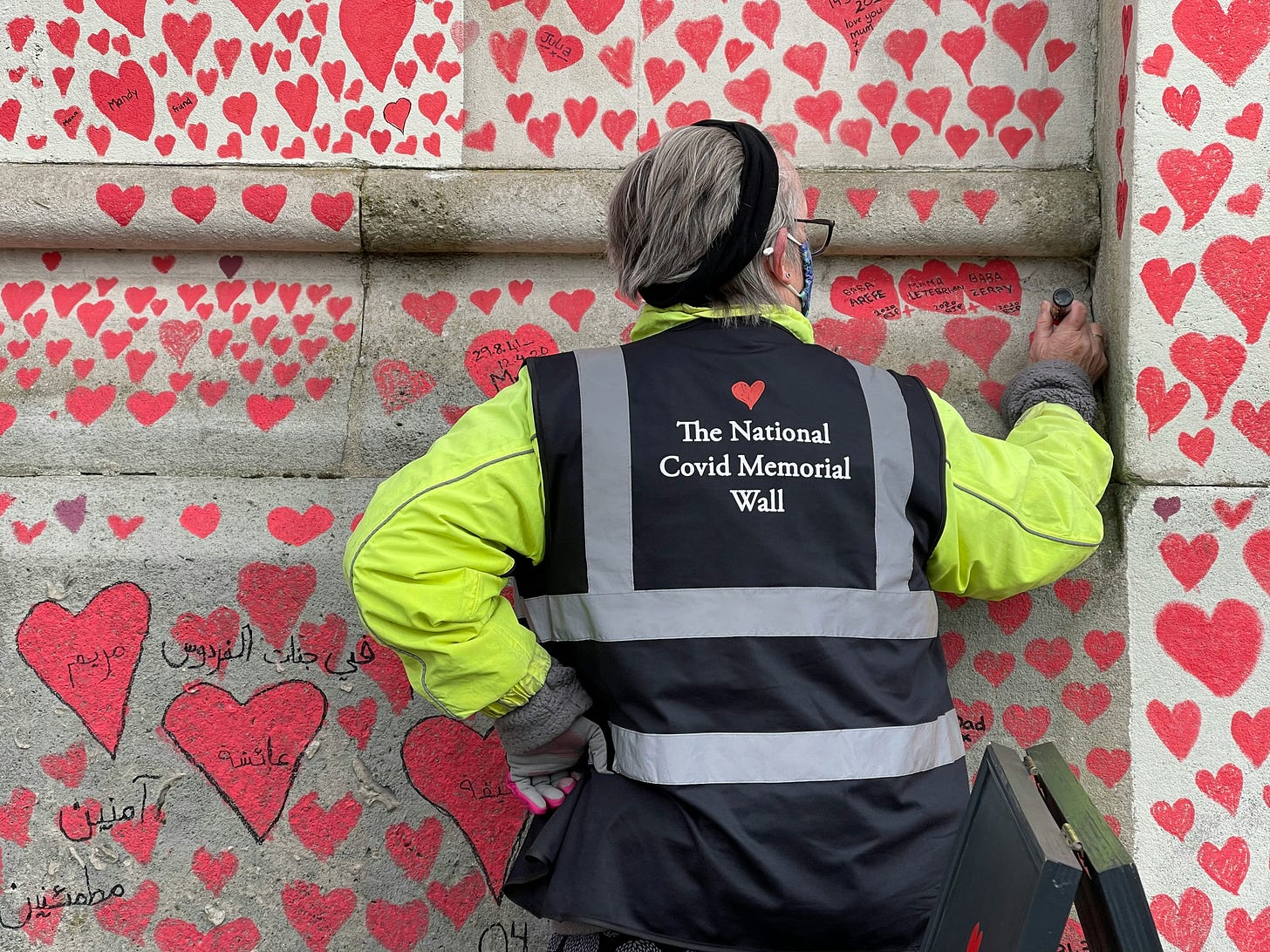I Soon Realized Too Many People Would Die
Personal Reflections on Responses to the COVID Pandemic in a Denominational Organization--Part Two

I Soon Realized Too Many People Would Die
Early response efforts to the COVID pandemic during March and April 2020 focused on flattening the curve. No one really knew exactly what to do. Even if they did, effectively communicating and convincing people of the best strategies and tactics, along with having the specific resources needed, would still have been impossible.
It was one thing to say this is what we must do. It was another to convince people they needed to do it because it is the best way forward. Or even felt they could do it. Very soon there were economic, emotional, physical, and spiritual alarms.
Flattening the curve involved slowing down the spread of COVID long enough to prevent overwhelming the healthcare systems. People were being infected so fast that there was not adequate time to implement an effective pattern of response.
The curve illustrated the number of new or active cases of the disease over time. Could it be flattened by the decisive effort of enough people soon and consistently?
Or would too many people die?
Simple Actions Denied
Early in the pandemic, one effort was to convince as many people as possible to stay home and avoid contact with others for several weeks to see if that would slow the spread of the virus.
Unfortunately, people did not comply in large enough numbers to flatten the curve. I was part of a group of religious leaders who joined with others to encourage actions to flatten the curve.
People needed to wear masks, if they could get them. A simple mask might suffice. Initially, securing N95 and other more effective masks was difficult. A surprising number of people chose not to wear a mask even once they became available.
My Role
As the leader of an association of around 100 congregations in the metropolitan Columbia, SC area, my role was to,
1. Help them learn about response methods that were working.
2. Share information about what various congregations were doing.
3. Tell them about the resources available from the denomination.
4. Ask what resources they needed which they had been unable to find.
5. Discover suppliers for the resources they needed.
6. Offer spiritual and emotional support to pastors, staff, and key lay leaders.
7. Gather congregational leaders virtually for prayer, conversation, support, and mutual learning.
8. Network with regional and national leaders, and organizations in our denomination, government, and the private sector.
9. Pray for the congregations—especially their leaders—and urge them to establish a pattern of saturation prayer for all people impacted and for those seeking to develop solutions.
10. Later, to help them understand the procedures and ethics of the Paycheck Protection Program from the government.
Congregational Responses
Many congregations responded to efforts aimed at flattening the curve, while others did not. Three very different types of congregational responses emerged.
First, as Christian congregations, we need to do everything possible to prevent people from becoming infected with the virus and potentially dying if not treated in time. We must minister to people and check on everyone in our congregation. Also, if reasonable, everyone in the neighborhoods and communities we serve.
Second, as Christian congregations, we have a responsibility to return to gathered onsite worship as soon as possible. God will protect us. God wants us to gather in the house of the Lord. We must obey God and express our religious freedom.
The radical element of this second group often quoted Bible verses like Hebrews 10:25 on not neglecting gathering for worship. They said allowing the government to tell us not to gather is in direct contradiction to a biblical mandate, such as Acts 5:29, which called for the early church to obey God rather than man.
Other congregations in this second group simply wanted to regather when it was safe and in ways that respected the lives and health of everyone who would attend. These congregations practiced good social distancing, sanitation measures, and mandatory mask use.
Third, many decided to focus on virtual means of gathering for as long as possible, perhaps until a vaccine became available. Many congregations did this for a period of time, some for a long duration—even a year or more. This was particularly true for racial and ethnic minority congregations in my Baptist association.
Did Flattening the Curve Work?
Overall, it did not work. People were impatient, and so were congregations. They wanted social interactions. Economic needs led many individuals to risk social interaction sooner than they should have.
There were people who denied the truth about the virus. The messages from the government were confusing and conflicting. It all depended on which government agency, office, or leader was believed.
All I knew was that many more people were likely to get infected and die
than early predictions from government sources suggested. And that is exactly what happened.
The curve was not sufficiently flattened.
What was your experience during the early period of March through June 2020?
Part Three will talk about Overnight Thousands of Pastors Became Tele-Evangelists!




My family’s experience was to doubt the efficacy of the vaccine, brought to market in haste with no trials and total liability protection for its producers. We doubted the value of masks, a position which has been verified. Since symptoms of Covid for healthy people were more cold or flu like, we depended on our immune systems. We got infected early with about a 48- hour blah feeling, loss of taste. Our symptoms were fewer than many friends who were vaccinated, with no after effects that so many of the vaccinated are enduring.